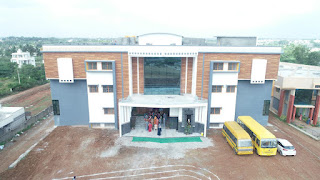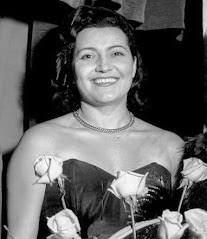Woman trapped by wealth who set up religious order
 |
| Maria De Mattias left behind a life of relative prosperity |
De Mattias, who died in Rome in 1866, was beatified in 1950 by Pope Pius XII and made a saint in 2003 by Pope John Paul II.
The Sisters Adorers of the Blood of Christ, which she established in 1834, now has a membership of more than 2,000, with communities in South America, the United States, Southeast Asia and Africa as well as Italy.
During more than 30 years travelling throughout Italy to help establish communities of her Sisters, De Mattias founded nearly 70 schools, often in remote towns and rural areas of Italy.
The young Maria had an upbringing said to have been happy for the most part but subject to constraints that children and adolescents in the modern world would find difficult to tolerate.
This had less to do with any restrictions imposed on her by her parents, though they had a strong faith that her father, Giovanni, passed on to her through his reading of the scriptures, than the political and social climate at the time.
About 30km (19 miles) south of the small city of Frosinone, and approximately 115km (71 miles) south of Rome, Vallecorsa sat close to the border of the Papal States and the Kingdom of the Two Sicilies, on the edge of a geographical region known as Ciociaria.
Territorial disputes across the area gave rise to frequent outbreaks of violence between competing factions. Gangs representing one side or another would often establish strategic bases in mountainous areas and terrorise local people, stealing food and demanding money.
 |
| Vallecorsa is built on a hillside in the rugged terrain of mountainous southern Lazio |
Although she was a restless and lively child, who enjoyed playing with her brothers, Maria spent much of her time inside the house, often in her room with the curtains closed so that no one outside could see her.
Despite her confinement, she was said to have been somewhat vain, fond of brushing her long, blonde hair and admiring herself in the mirror. It was while doing this one day, at the age of 16 or 17, that she is said to have undergone a dramatic change. Struck by the emptiness of her life - her father did not believe in girls receiving a formal education - she was suddenly repulsed by her own face in the mirror and looked away, her eyes falling instead on the painting of the Madonna above her bed, to which she had never previously paid much attention.
Drawing herself closer to the painting, she said that she sensed the Madonna was speaking to her and soon decided that if there was to be a purpose to her life, it would be one dedicated to God.
She somehow taught herself to read, poring for hours over the contents of the many spiritual books on shelves around the family home. In 1822, she listened to a sermon delivered by Gaspar del Bufalo, founder of the Missionaries of the Precious Blood, who was visiting Vallecorsa.
Del Bufalo’s words on devotion to the Precious Blood of Jesus inspired Maria to see Christ's life as a model for self-sacrifice. The following year, one of Del Bufalo’s close followers, Giovanni Merlini, returned to the village to assist in the founding of a House of Mission.
 |
| The Order continues to help build new schools, such as this one in the city of Mysura in southern India |
In 1834, with Merlini’s help, she founded the Congregation of the Sisters Adorers of the Blood of Christ to bring a focal point to this work.
The religious order was founded as an apostolic order, an active teaching order, rather than a monastic one. After establishing a first school in Acuto, another town in the Ciociaria area of Lazio, the new order received papal approval in 1855.
De Mattias was tireless in her travelling throughout Italy establishing communities of her Sisters, often walking long distances or making treacherous journeys on donkeys, and preaching in towns as she came across them.
The women drawn to her communities were often poor but by the time De Mattias died in Rome in August 1866, at the age of 61, the community had created more than 70 schools in Italy, with some in Austria, Germany, and England.
Her followers wanted her to be buried in the church of Santa Maria in Trivio, a few steps from the Trevi Fountain, which was the mother church of the Missionaries of the Precious Blood, but such burials at the time were not allowed on the grounds of hygiene.
Instead, she was buried in Rome's Campo Verano Cemetery, her tomb donated by Pope Pius IX.
Although it is customary for a saint’s feast day to be held on the anniversary of his or her death, there are exceptions to this rule. Maria De Mattias is one, her feast being celebrated on her birthday, February 4.
Travel tip:
The statue of Maria De
Mattias in Vallecorsa
Vallecorsa, the home village of Maria De Mattias, occupies a hillside location at the foot of Monte Calvilli, at 3,661ft (1,116m) the highest peak of the Monti Ausoni, which themselves are part of the Volsci range of the Lazio Apennines. Sometimes known as la città dell'olio - the city of the oil - it is notable for the growing of olive trees on terraces cut into the hillside and kept intact with stone walls. The area is popular for trekking and mountain biking. The town itself is characterised by steep, winding streets which on the perimeters often emerge into small squares offering sweeping views over the surrounding countryside. Street names such as the Via Santa Maria De Mattias and the Via San Gaspare del Bufalo acknowledge the history of the village. There is a statue of Maria De Mattias in Piazza Plebiscito at one end of the Via Santa Maria De Mattias; at the other is a museum housed in what was the family’s home.
Travel tip:
The Stadio Benito Stirpe, home of Frosinone
Calcio, is one of the city's more modern buildings
The ancient city of Frosinone, which was Gens Fursina in Etruscan times and Frusino under the Romans, is located on a hill overlooking the valley of the Sacco about 75km (47 miles) southeast of Rome, with the wider city spreading out across the surrounding plains. The Roman writer Cicero had a villa in Frusino. The city is part of a wider area known as Ciociaria, a name derived from the word ciocie, the footwear worn by the inhabitants in years gone by. Ciociaria hosts food fairs, events and music festivals as well as celebrating traditional feasts, when the local people wear the regional costume and the typical footwear. Visitors can see the remains of a Roman amphitheatre from Viale Roma, while churches of interest include the Baroque Chiesa di San Benedetto in Via Cavour Camillo Benso, which also contains a small art gallery. A much more modern edifice in the city is the Stadio Benito Stirpe, the 16,000-capacity home of Frosinone Calcio, which was built between 2015 and 2017 at a cost of around €20 million after the football club was promoted to Serie A for the first time in its history.
Also on this day:
1667: The birth of painter Alessandro Magnasco
1676: The birth of composer Giacomo Facco
1875: The birth of patriot and irredentist Cesare Battista
1892: The birth of playwright Ugo Betti
2014: The death of soldier and writer Eugenio Corti
.jpg)

.jpg)



.jpg)
.jpg)


.jpg)

.jpg)





.jpg)














.jpg)

